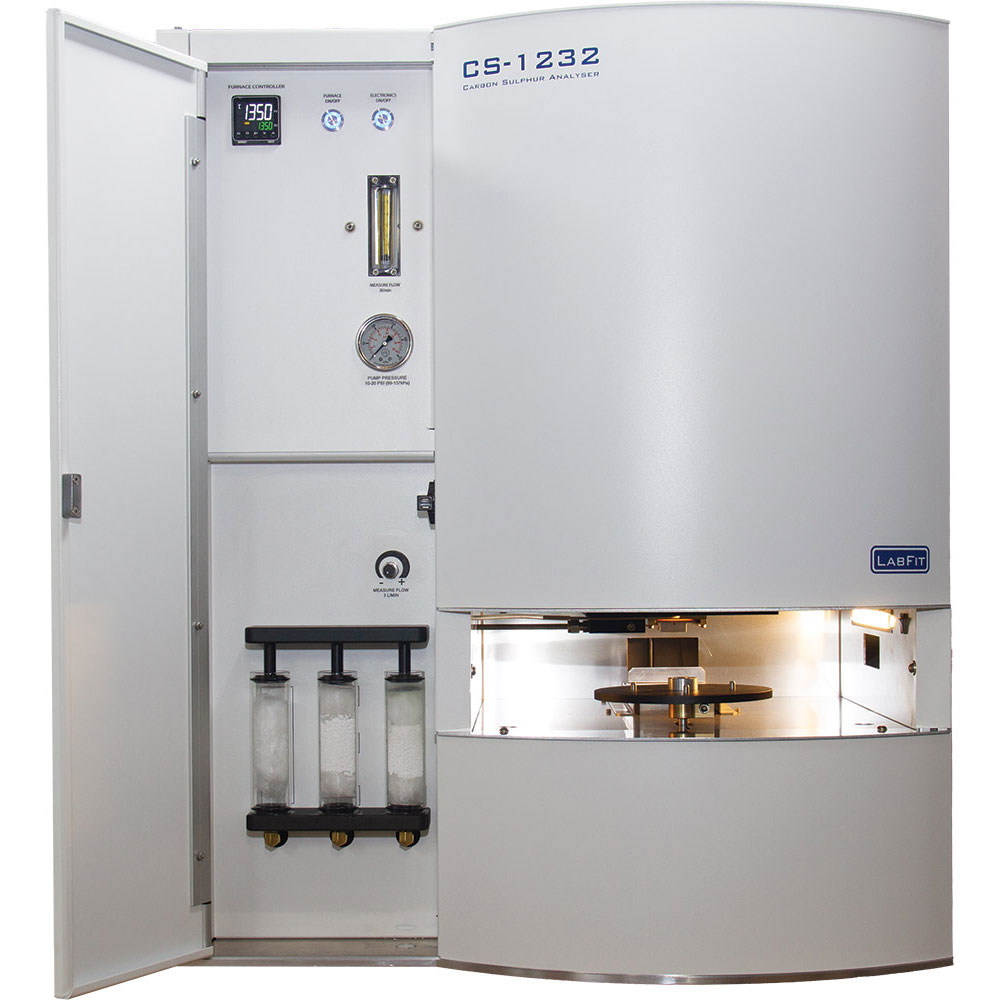CS1232 Carbon Sulfur Analyzer
Tungsten accelerator also known as tungsten particle, tungsten chip accelerator, or tungsten granule is a form of coarse tungsten particles made by breaking forged tungsten bars.
The forged tungsten bars are used instead of sintered tungsten powder because repeated forging of used parts rules out the possibility of other impurities being introduced. The forged tungsten bars have low oxygen which implies they are relatively pure when oxygen is assumed as an impurity.
Considering the unique physical and chemical attributes the tungsten accelerator shows it is used for a wide range of applications. Particularly, when there is a requirement for low oxygen content and other gaseous elements. Owing to this, it is also used in carbon sulfur analyzers for analysis and measurement of carbon and sulfur in metallic and non-metallic substances.
Here are several reasons for validating use of tungsten accelerator in Carbon Sulfur Analysis:
1. The melting point of tungsten is 3380℃. With such a high melting point tungsten is hard to melt.
2. Tungsten supports quick and fast oxidation. When the temperature of the tungsten accelerator crosses over 650℃, it begins to oxidize. And on oxidation, it releases a lot of heat. (W3/2O2 =WO3, ∆H=-840KJ*mol-1). The infrared Combustion Carbon Sulfur Analyzer has a high-frequency furnace involving fast reaction and instantaneous heating, therefore tungsten accelerator is used here as an additive.
3. Tungsten trioxide produced after oxidation is actually an acidic oxide whose production facilitates the release of CO2 and SO2. With a melting point of 1473℃ and a boiling point above 1750℃, tungsten trioxide is stable in the air. Tungsten trioxide (WO3) has an important characteristic feature, at a temperature higher than 900 ℃, it undergoes sublimation, causing some of the WO3 to volatilize. As WO3 passes off as vapor, it enhances the diffusion of carbon and sulfur. Because of this the carbon and sulfur present in the specimen become fully oxidized. While the volatilized WO3 again gets solidified at 700-800℃, capturing left out Fe2 from the gas stream to avoid catalytic oxidation of SO2 to SO3. Additionally, it restricts the absorption of sulfur into the gas stream to prevent discrepancies in sulfur and carbon analysis.
4. Tungsten has a lower blank which makes it suitable to be used for analysis and measurement of low carbon and low sulfur concentrations. Due to this, the tungsten accelerator is used in a high-frequency combustion furnace.
5. The optimal regulated range for tungsten particles is between 0.84~0.42mm, at a porosity of 15%. However, it requires a compact, smooth surface to facilitate seamless oxygen flow to result in fast oxidation and burning. Overall, this also lowers the absorption onto a surface.
Hence, the use of a tungsten accelerator in Carbon Sulfur Analyzer improves the efficiency and effectiveness of carbon and sulfur measurements. They can help with the accurate analysis of given elements in a wide range of alloys, metals, and nonmetals.
As a reputed supplier and manufacturer of state-of-art testing equipment, Labfit can provide you with a CS1232 Carbon Sulfur Analyzer equipped with tungsten accelerators. Please contact us on +618 9272 4444 for any inquiry.


